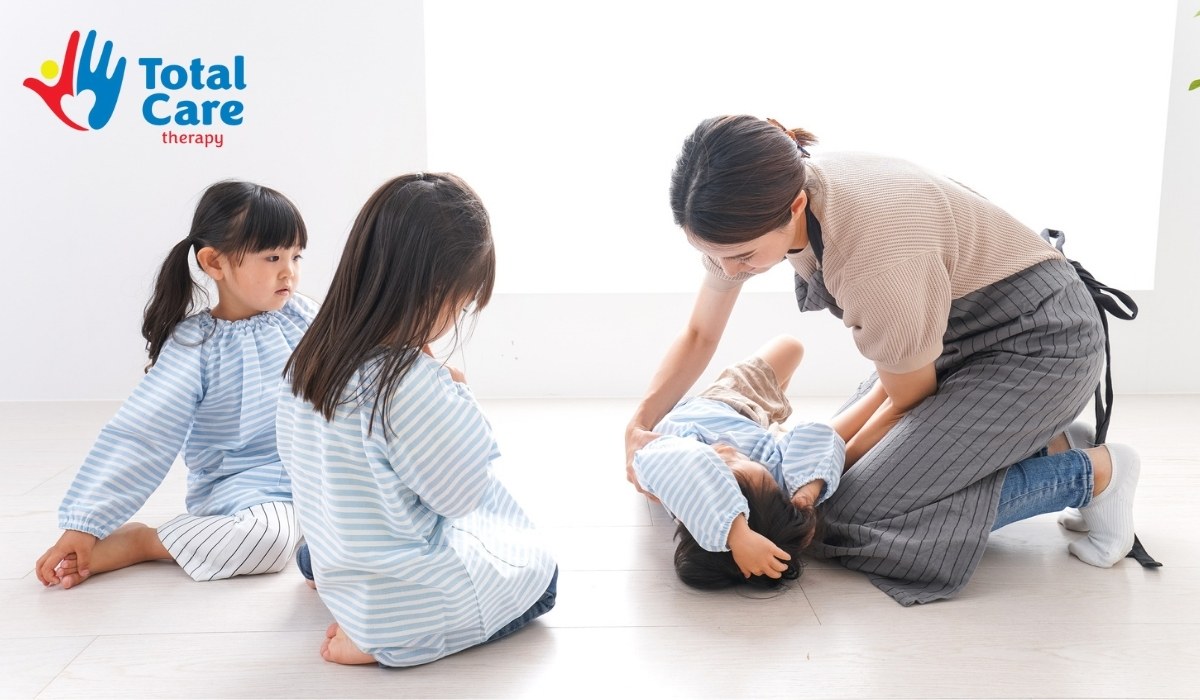SPD & Autism: How to Help Your Child Cope
Learn how sensory processing disorder and autism affect your child’s daily life. Discover calming strategies, routines, and expert tips to help your child cope and thrive.
SPD & Autism: How to Help Your Child Cope
Key Points:
- Sensory Processing Disorder (SPD) often overlaps with autism, making daily routines and environments overwhelming for children.
- Practical strategies such as sensory diets, structured routines, and calming techniques can ease overstimulation.
- ABA therapy provides individualized support to help children regulate their sensory experiences and build adaptive skills.
When your child has both autism and sensory processing challenges, ordinary moments—like brushing teeth or walking into a noisy grocery store—can feel like climbing a mountain. Sensory overload, unpredictable behaviors, and emotional meltdowns can leave parents feeling helpless. But understanding Sensory Processing Disorder (SPD) in the context of autism spectrum disorder (ASD) can open doors to real, lasting solutions.
This guide explains how SPD affects autistic children, what daily life looks like through their lens, and how structured support—especially through ABA therapy—can help your child cope and thrive.
Understanding SPD and Its Connection to Autism
Sensory Processing Disorder happens when the brain struggles to receive and respond appropriately to sensory input. Children may be hypersensitive (over-responsive) or hyposensitive (under-responsive) to sensory experiences like sound, touch, movement, or light.
In autism, sensory difficulties are extremely common. Research suggests that over 80% of autistic individuals experience some form of sensory processing difference. This overlap often leads to intense reactions—covering ears at sudden sounds, resisting certain fabrics, or craving constant movement.
Recognizing that SPD is not “bad behavior” but a neurological difference is the first step. When parents understand that their child isn’t trying to be difficult but is simply overwhelmed or under-stimulated, compassion and effective intervention follow naturally.
Signs Your Child May Be Struggling with SPD
Every child experiences sensory input differently, but certain patterns can signal that sensory processing is affecting daily life.
Some signs to watch for include:
- Avoidance of certain sensations: Refusal to wear clothes with tags, cover ears around loud noises, or resist hugs.
- Sensory seeking behaviors: Spinning, jumping excessively, or craving strong pressure.
- Difficulty with transitions: Meltdowns during changes in routine or moving from one activity to another.
- Poor motor coordination: Trouble with buttons, handwriting, or balance-based activities.
- Emotional outbursts tied to specific triggers: Sudden crying or aggression when faced with unexpected sensory input.
Not all sensory reactions are cause for concern, but if they interfere with your child’s ability to participate in school, play, or family life, professional assessment can help.

How SPD and Autism Affect Daily Life
For many autistic children with SPD, everyday environments can feel unpredictable and intense. A bright classroom may feel blinding. The hum of a refrigerator might sound deafening. Even hugs from loved ones can be overwhelming.
This constant sensory input can impact:
- Emotional regulation: Children may appear anxious, hyperactive, or withdrawn.
- Learning and communication: Overstimulation can make it difficult to focus or process language.
- Social participation: Avoidance behaviors may be misinterpreted as shyness or defiance.
The key is to build predictability and sensory awareness into daily routines—empowering children to understand their bodies and feel safe in their environments.
5 Calming Strategies That Work
When a child’s sensory world feels overwhelming, calming strategies become essential tools for both parents and children. But there’s no one-size-fits-all approach—what soothes one child might overstimulate another. The goal is to identify patterns and create a personalized “sensory toolbox.”
Here are some effective approaches to consider:
1. Create a Sensory-Safe Space
Designate a calm, low-stimulation area at home where your child can retreat. Soft lighting, weighted blankets, or gentle music can help regulate emotions.
2. Use Deep Pressure and Proprioceptive Input
Activities like firm hugs, rolling in a blanket, or pushing against a wall provide grounding input. These sensations help the nervous system feel centered and calm.
3. Encourage Movement Breaks
Sensory breaks—like swinging, jumping, or stretching—can prevent overload by helping children release energy throughout the day.
4. Incorporate Breathing and Mindfulness Techniques
Teach your child simple breathing exercises or grounding games (“find 3 things you can see, 2 things you can hear”). These techniques promote self-regulation.
5. Maintain Predictable Routines
Structure builds safety. Predictability reduces anxiety about what’s coming next and gives children a sense of control.
When integrated into daily life, these strategies help children identify what their bodies need—turning frustration into confidence.
Building Consistent Routines for Sensory Stability
Children with autism and SPD thrive when they know what to expect. Structured routines make the world feel less chaotic and improve cooperation during transitions.
Here’s how to design an effective sensory-friendly routine:
- Start and end the day with calm: Morning routines with gentle lighting and soft music can prevent overstimulation. At night, dim lights and quiet time signal it’s time to unwind.
- Use visual schedules: Pictures or icons that show the order of activities give your child a sense of predictability and independence.
- Incorporate sensory breaks: Embed short sensory activities between tasks—like swinging before homework or using a fidget toy during reading time.
- Keep transitions smooth: Offer verbal warnings (“Five more minutes until bath time”) to prepare your child mentally.
- Adjust based on sensory load: If your child had a busy school day, schedule quieter activities at home to balance stimulation.
Consistency doesn’t mean rigidity. Flexibility within a routine allows your child to adjust without losing their sense of safety.
How ABA Therapy Supports Children with SPD and Autism
Applied Behavior Analysis (ABA) therapy focuses on understanding why behaviors occur and teaching new, adaptive responses. For children with both autism and SPD, ABA can be transformative because it doesn’t just address sensory reactions—it builds the skills needed to manage them.
Here’s how Total Care ABA integrates sensory support within ABA therapy:
- Functional behavior assessments: Therapists identify sensory triggers that lead to challenging behaviors.
- Individualized intervention plans: Each child receives goals tailored to their sensory profile and learning style.
- Replacement behavior training: Instead of avoiding sensory input, children learn coping skills like requesting breaks or using deep pressure tools.
- Parent training: Families gain practical tools for managing sensory challenges at home and in the community.
By combining structured learning with sensory awareness, ABA therapy helps children not only tolerate but also thrive in diverse environments.

Sensory Diets: Practical Tools for Daily Balance
A “sensory diet” isn’t about food—it’s a personalized set of activities that provide the right type and amount of sensory input your child needs throughout the day.
When designed by an occupational therapist or BCBA, sensory diets can:
- Reduce sensory overload by regulating the nervous system before stress builds up.
- Improve focus by giving children the input they crave in healthy, structured ways.
- Support self-regulation through predictable, consistent sensory opportunities.
Examples might include:
- Morning: Jumping on a mini-trampoline or brushing protocol to start the day alert.
- Afternoon: Fidget play or a weighted lap pad during study time.
- Evening: Gentle swinging or yoga stretches before bed.
The goal is balance—meeting your child’s sensory needs before dysregulation occurs, not after.
Helping Siblings and Family Members Understand SPD
A family’s understanding of SPD plays a huge role in your child’s comfort and success. Siblings often need guidance to interpret sensory-driven behaviors correctly.
You can foster empathy by:
- Explaining sensory differences simply: “Loud sounds hurt your brother’s ears like a fire alarm hurts ours.”
- Setting up family sensory rules: Agree on quiet times or ways to signal when someone needs a break.
- Celebrating small wins: When your child tries a new food or tolerates a noisy space, make it a family victory.
A supportive family culture reduces stress, builds connection, and models acceptance—helping every child feel understood and valued.

When to Seek Professional Help
If sensory challenges interfere with sleep, school participation, or daily functioning, seeking support from a licensed behavior analyst or occupational therapist can make a world of difference.
Professional guidance helps you pinpoint triggers, set measurable goals, and teach your child coping strategies that actually work. Early intervention matters—addressing sensory challenges proactively can prevent future frustration for both you and your child.
Helping Your Child Cope—and Thrive—with Support from Total Care ABA
Sensory challenges don’t have to define your child’s world. With consistent support, individualized plans, and a compassionate team, your child can learn to self-regulate, communicate their needs, and participate more fully in life.
At Total Care ABA, we specialize in helping children with autism and sensory processing difficulties build meaningful skills through evidence-based ABA therapy. Our programs are personalized, family-centered, and designed to promote long-term growth and independence.
If you’re ready to explore how ABA can support your child’s sensory and behavioral development, contact us today to learn more about our ABA therapy in Utah, New Mexico, Tennessee, Indiana, Georgia, Arizona, North Carolina, and Maine.
Together, we can help your child find calm, confidence, and joy in everyday moments.








